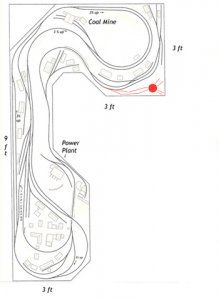Figured I'd better start a new thread with the new road name, so people (including myself!) don't get confused.
Givens
- Max layout size: 9x6x3 L shape
- N scale
- Transition era (1953) near the end of steam
Druthers
- No point to point. Would like some continuous run with some switching.
- Single track mainline w/ passing sidings.
- Industry (in order of importance) Coal, lumber, grain, oil.
- 2 towns for passenger traffic, 3 towns would be nice.
- At least 1 interchange
In The Classic Layout Designs of John Armstrong, there's a layout called "French Broad Valley". It is shown in HO scale to fit a space of 10x18, so it should fit my available space in N scale with little modificaiton.

Givens
- Max layout size: 9x6x3 L shape
- N scale
- Transition era (1953) near the end of steam
Druthers
- No point to point. Would like some continuous run with some switching.
- Single track mainline w/ passing sidings.
- Industry (in order of importance) Coal, lumber, grain, oil.
- 2 towns for passenger traffic, 3 towns would be nice.
- At least 1 interchange
In The Classic Layout Designs of John Armstrong, there's a layout called "French Broad Valley". It is shown in HO scale to fit a space of 10x18, so it should fit my available space in N scale with little modificaiton.



 .
.